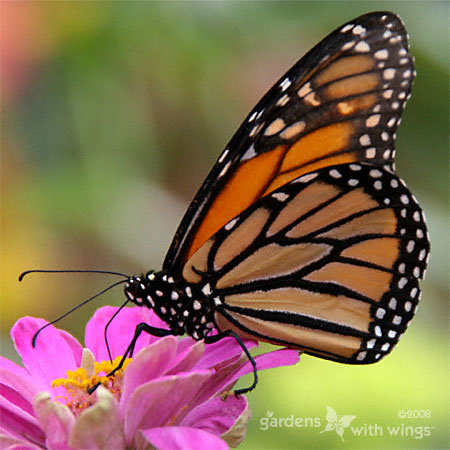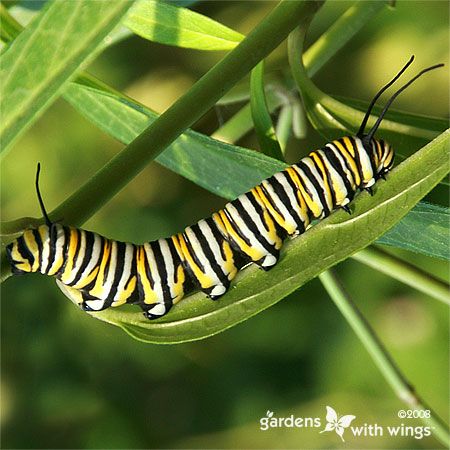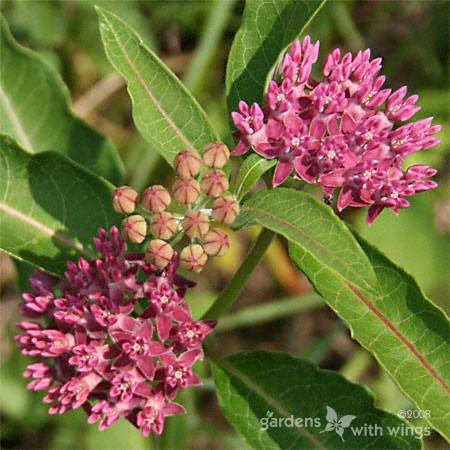by Regina Cutter Edwards – Entomologist
There is no butterfly superior to the Monarch butterfly. You might be wondering why the Monarch is considered special. This remarkable butterfly is one of the most well known butterflies in the world, as well as the most dispersed. The Monarch is common in North, Central, and South America, as well as in Australia, New Zealand, Europe, Hawaii, other Pacific Islands, Asia, Ireland, and southern Spain. Read on to find out why the Monarch “rules”, their unique characteristics, and migration patterns.

Why the Monarch Rules
There are many reasons why the Monarch “rules.” It lives longer than most butterflies, moves farther in migration than m; it other animals, it has notoriety, is world renown, and has been named after the King of England, William of Orange. The first settlers to North America settled on the name Monarch after seeing the bright orange and thinking of the King.
Monarch’s Special Characteristics
The unique characteristics of the Monarch are fascinating. The notoriety that was mentioned is referring to the unpleasant taste of this beautiful butterfly. A 19th century entomologist, C.V. Riley, theorized that the Monarch was distasteful due to the bright orange and black coloration.. This has been proven correct. Time and time again, birds and other animals have become very ill and vomited profusely after eating one of these orange and black beauties. Usually, once a Monarch is eaten, they are never touched again by the same predator.
Unappetizing to Predators
The reason that a Monarch is unpalatable is because it feeds solely on plants in the Asclepias genus, also known as Milkweeds. These plants produce a heart poison called cardenolides that is very upsetting to vertebrate animals. The caterpillars are not bothered by these toxic steroids and instead can store them throughout their life cycle within their bodies.
Orange Wings Protect Other Butterflies
The coloration and reputation of these magnificent creatures have become a standard of what other butterflies long to be – not eaten. The Queen and Viceroy butterflies are two examples that display the same warning coloration.
It is not just other butterflies that take a special interest in the appearance of the Monarch. People also acknowledge this extraordinary butterfly and give it special recognition. In fact, there are seven states that have designated the Monarch as either the state insect or butterfly – Alabama, Idaho, Illinois, Minnesota, Texas, Vermont, and West Virginia.
The Amazing Monarch Migration
The largest fascination associated with Monarch butterflies is their migratory behaviors. They can travel up to 3000 miles. Each year, there are approximately 1 billion Monarchs in the eastern United States that migrate to central Mexico to a coniferous fir-pine forest which is approximately 217 square miles.
How does a butterfly that lives 2-6 weeks accomplish such a long journey? Well, the last generation of the summer, can live up to 9 months. This is sometimes referred to as the Methuselah generation.
What Happens When Juvenile Hormones (JH) Decrease?
In August, when temperatures in the north begin to drop and daylight hours decrease, migrations begin. These changes in the environment cause the juvenile hormone (JH) production in the Monarch to decrease. JH is responsible for reproductive maturation.
This, in turn, triggers the need for the butterflies to migrate, at which time they become gregarious, living in groups instead of alone. The Monarchs make their way south as the cold winds blow. When the warm winds blow, they stop for nectar. By the time they reach Mexico they have stored up enough lipid content from the nectar to overwinter, sometimes for over 5 months.

Day-Light Hours and JH Increase
As spring comes around and the day-light hours increase, JH is increased and reproduction begins. The Monarchs need milkweed to lay their eggs on, so they fly north to find their host plants. Monarchs can lay up to 400 eggs throughout their lives. They lay their eggs individually on leaves because the caterpillars can actually be cannibalistic after they hatch from the egg.
They eat their own eggshell first and if there are other eggs, they will eat them before fresh milkweed leaves. One of the theories as to why Monarchs keep flying northeast when leaving Mexico is to disperse their eggs. If they were all laid in a single area, the survival rate would be much lower. Monarchs will continue to fly as far north as Canada, wherever there are milkweed plants thriving.
Read more: Butterfly Migration: A Rhythm in Nature
Amazing Beyond Beauty
Monarch butterflies have fascinated people for years, and to research to understand how these amazing beauties can accomplish so much is ongoing. They are wonders of nature that deserve a royal rank among other living organisms. Monarchs have stood the test of time as they have traveled the world, immigrating and migrating. They have been recognized as state insects and butterflies as tokens of admiration. The Monarch butterfly is as beautiful as it is a miracle in nature. If there is ever a butterfly that deserves to be welcomed into the gardens of North America, it is the Monarch.
References:
Borror DJ, Triplehorn CA, Johnson NF. 1992. An introduction to the study of insects. 6th ed. New York: Saunders College Publishing.
Brower LP. 2003. “Monarchs”. Encyclopedia of insects. Ed. Vincent H. Resh, Ring T. Cardé. New York: Academic Press. p 739-743.
Netstate.com. Official state insects. 2008 28 March. NSTATE, LLC. Accessed 2008 23 Aug.
University of Kansas. Habitat destruction may wipe out monarch butterfly migration. 2008 5 April. ScienceDaily. https://www.sciencedaily.com/releases/2008/04/080401230705.htm Accessed 2008 23 Aug.





